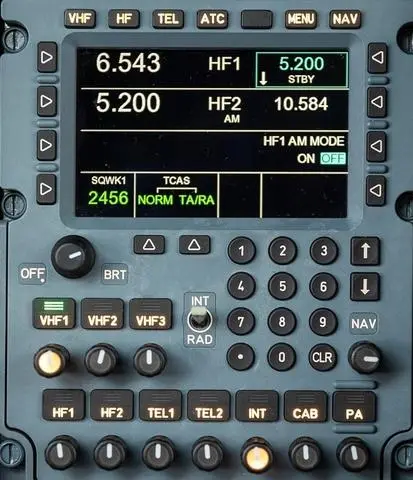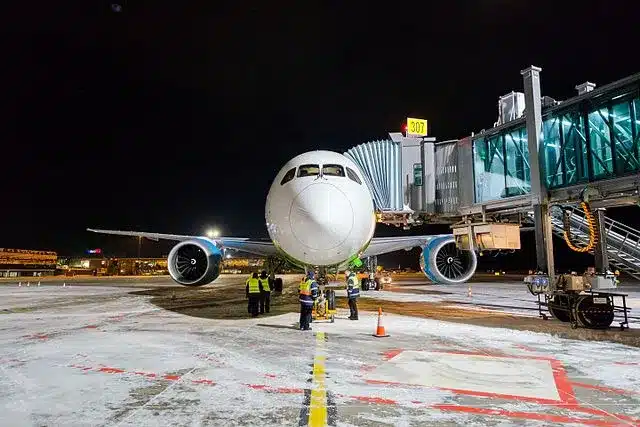Pre-contract letters of Intent - Watch these Signs
Commercial Aircraft Leasing uses only a few formal agreements, one of which is the LOI. The Letter of Intent. It’s a great tool for a company – if used correctly.
But there are a lot of cons with those pros and misuse can cost you. Big time.
Agreements
The letter of intent and its cousin, the MOU (Memorandum of Understanding), are great strategies to start a complicated, multi-level prospective deal. Like selling or leasing commercial aircraft.
At the end of this article, you can download a sample intent letter. With what we feel are standard terms for a business deal. And this approach works for aviation assets (Airplanes, Engines even a set of landing gear). But it should work for any sale or deal negotiation once you know what you are doing.
Which you do. Right?

What is a Letter of Intent?
An LOI is a pre-contract document signed by both parties that is not legally binding*. It can be one page, or twenty. It can be a simple application, or it can be super-detailed. To make the final contract almost fly on autopilot. But it’s what it doesn’t say that can be most valuable.
How to decide when to use the LOI or MOU?
Some people will say that an MOU is a legal document and an LOI is not. This is true, but a huge simplification. It needs more explaining. First, in our experience, we use the LOI. So, if you are a company selling something, or buying something then this is the tool you use.
In aviation, MOUs are mostly seen between state agencies, intra-governmental teams or in M&As where business agreements or Joint ventures are contemplated. So put simply, if you are a seller/buyer team or Lessor/lessee of assets, use the LOI. If you are forming a partnership or Joint venture, use an MOU.

Why use a Letter of Intent agreement?
First off don’t if you don’t have to. If you are in the position of a willing seller (or lessor) and you have found a suitable, willing Lessee or buyer – just go straight to contract. This will be a requirement, so save yourself the time and convert your sale.
But aircraft (and Jet engines) are expensive pieces of machinery that take time to be inspected and approved. And a lot of time between initial contact and that last page signature can pass.
Chris Do says there are three types of clients – Value Buyer, Window Shopper, and Price buyer. When you are trying to sell anything, you deal with a lot of window-shoppers and time wasters. And like most business sectors, we need to kiss a lot of frogs to find the prince.
There’s a significant risk when we engage with a potential buyer- we call it “execution risk”. Which is an opportunity risk that a buyer will fail to sign (or you are excluded from leasing to him) and time is wasted.
Because other, suitable buyers could have come and gone. And losses have now been authored. And if too much time goes by, the market can move in such a way that this can be really, expensive.

The Pro’s and Con’s of the LOI
Let’s look at it from the seller team point of view – and just flip it if you are buying;
- An LOI is a quick way to organize the key commercial terms. Do we have a deal or not?
- An LOI sorts the buyer wheat from the chaff. 9 out of 10 window shoppers won’t want to discuss it.
- An LOI should have a deposit on signature. It can be refundable, but only within a brief period. Again, if they refuse – they’re not real.
- An LOI should be subject to approval. This allows both sets of commercial guys to do their best while affording them the chance to claw back if management doesn’t like it. But it goes both ways.
- An LOI has a finite date. Buyers must act quickly or lose the deal.
- Multiple LOIs can and are issued for the same asset. There is no law against this until one is signed. Then the asset is off market.
- An LOI allows for a holistic look at a deal. A commercial person tries the best he can, but delivering an aircraft needs all department’s sign-off. Why? Because you need time to make sure you are not exposing yourself.
Some key issues the LOI will address are;
- Delivery conditions
- Delivery locations
- Jurisdictions
- Registration
- deregistration
- Transfer of Ownership.
- Tax/Insurance
- Governing law
- Confidentiality
All of these could have a fiscal impact on the terms of the deal and the LOI won’t reveal them, only the final contract. So, the LOI is a balancing act between the marketing efforts and the deal decision.

Our Advice on LOI‘s
Start with an NDA (non-disclosure agreement). Yes, it’s more paperwork but it’s widespread practice in Aviation, and for good reason. In our experience, you don’t want sensitive company financial information out in the wild. Especially fundamental terms that have been tailored for one client.
You don’t quote the same terms for a 10-year lease to JetBlue as you would for a six-month lease to Air America out of Cambodia (no offense Laos!). If a candidate approaches you looking for specs, prices, or terms – NDA them first. It’s also a wonderful way to kick start the KYC process, as you now have the legal entity details and a contact for your own internal risk guys to have a peek at.
Letter
Have a Letter of Intent boiler plate ready to go on all assets you own or manage. Even when you don’t need it. It is great practice, as they ask all the important questions (that you should already know). It allows you to revert internally to get this up-to-date data from your employers. Now you look super-smart.
We also advise for a detailed Letter of Intent if the client is real, and you can develop a better position. The goal is that the LOI terms will be airdropped into the definitive agreement, and this is what you want. 75% of contracts are boilerplate anyway (or should be left to the lawyers and tax advisors).
Everything else is delivery/redelivery items that are standard. Or at least it should be for your application process. The key reason for an LOI is that you want the client to commit to the deal in such a way that he will move to the contract stage. That’s our experience.
Email and Cover Letter
In Aircraft leasing terms there are a few basic steps to this whole process
- Marketing = Interest/Approach
- NDA
- Asset specifications at delivery
- Offer/Terms at delivery
- Buyer Inspection (physical and document
- Final Contract
- Delivery certificates signed
Definitive Agreement
The significant risk is the phase between Inspection and contract. This is when the client or his representatives need to physically go to inspect the aircraft, as is their program entitlement. Hopefully, they see what has been represented but this can take weeks or sometimes months (thanks Covid!).
It’s not as bad as the shipping business where the physical inspections can take a year or more, but if you have a desirable asset and it’s new to a sellers’ market, you really don’t want to waste that much time.
Aviation is still also a very seasonal business with April/May being the start of the European travel season. If you miss your window for delivery here, you could be looking at 6 more months of aircraft parked on the ground. The same goes for November, you don’t want to take an aircraft back when the seasonal program is over.









